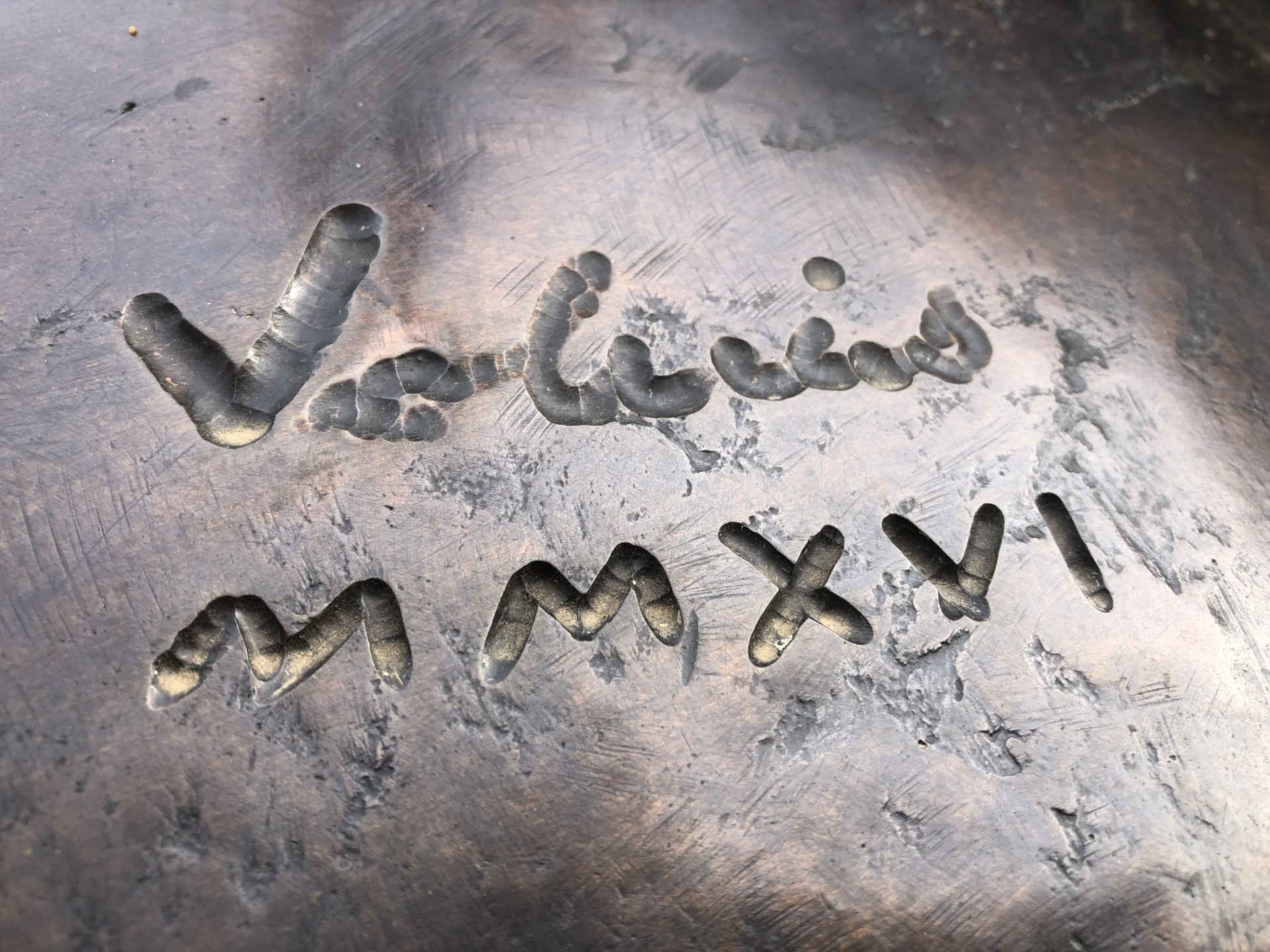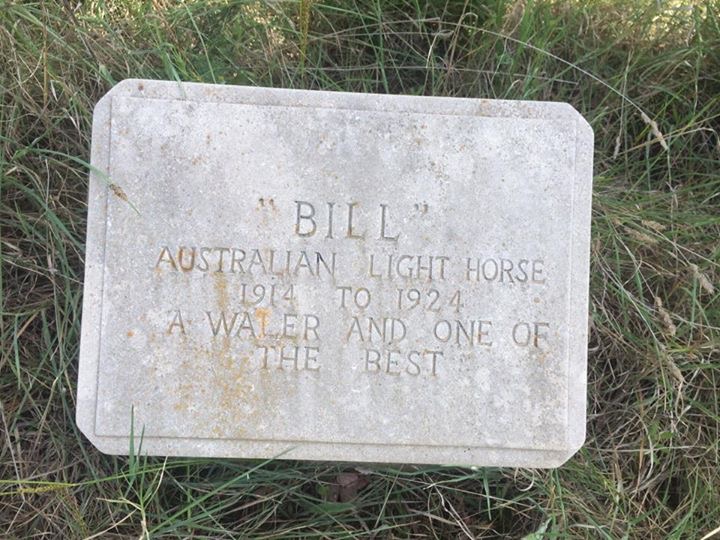Bill the Bastard
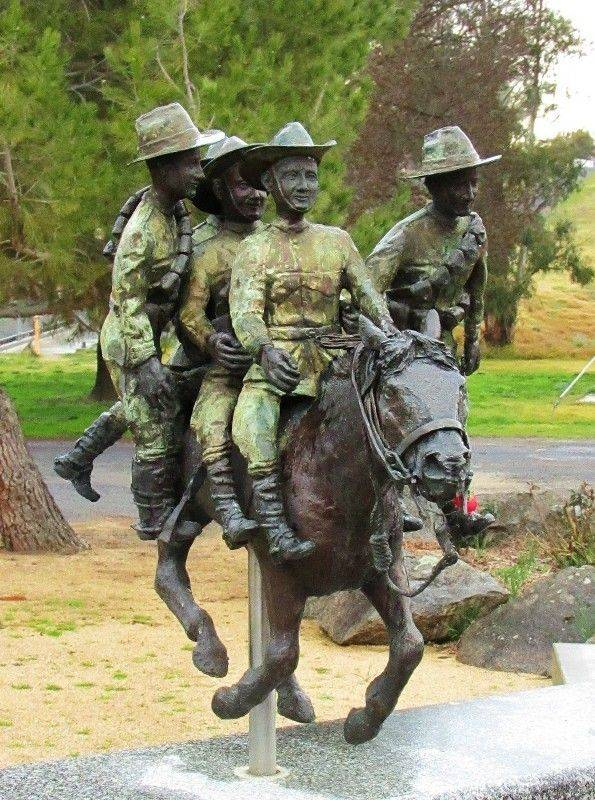
Janet Lane (& Angela Tiede) writes. Image: Carl Valerius’ original miniature statue of Bill, Monument Australia website.
Most of us know the story of this gutsy horse, a chestnut stallion, but here’s a bit for those who don’t…
A big horse and difficult – a bucker, hence his name – Bill the Bastard threw all comers off in a few seconds, although one experienced rider did last 2 minutes. So he was used as a packhorse at Gallipoli and despite 17.1hh seeming ungainly for a war horse, he survived and worked hard there. He carried John Simpson Kirkpatrick – of Simpson and the donkey – down from the Gallipoli heights after Simpson was killed. Carried countless badly wounded men to safety from precarious positions.
Image: Packhorses passing along a road at Anzac. Gallipoli. AWM
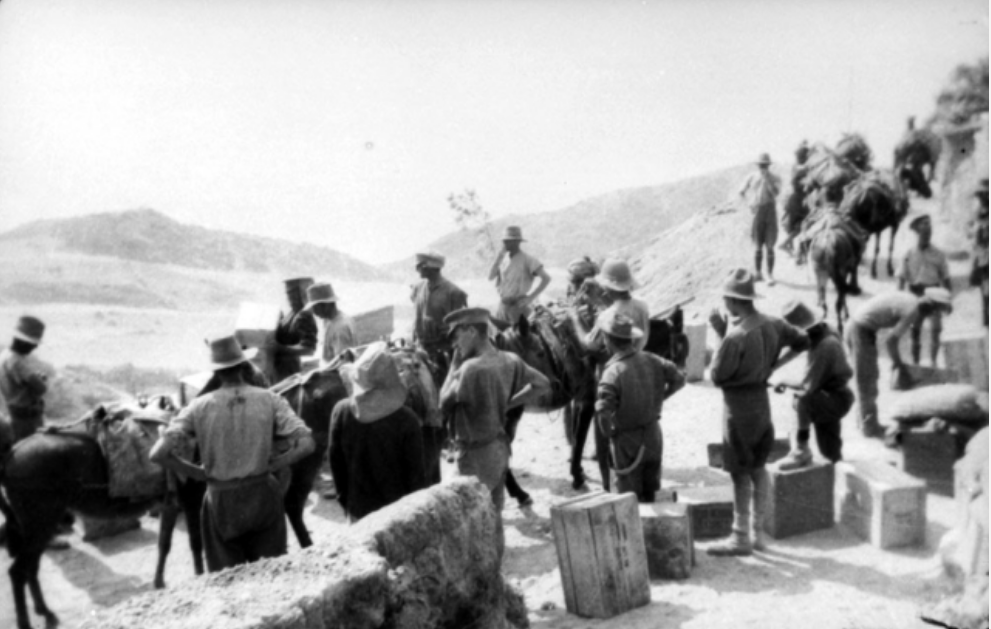
A fast horse was also needed for despatches at Gallipoli, a highly dangerous job – galloping from Suvla Bay to Anzac Cove – a seven kilometre gallop, much under fire. Often horse and/or rider were shot. Bill was used once when a speedy delivery was vital – bets were made his rider would be bucked off – yes Bill made it with his despatch but his rider Captain Anthony Bickworth, an Englishman, was thrown after two kilometres and found unconscious; and it transpired Bill had been shot in the flank.
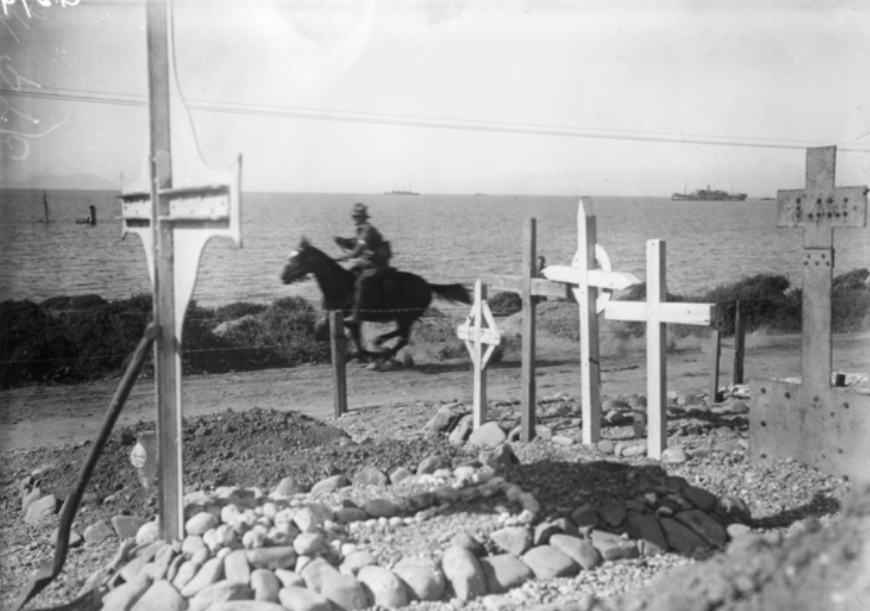
Image: A despatch rider galloping from Suvla Bay to Anzac Cove to avoid being sniped at, AWM.
Great risk was run by these men in carrying out their very important duties. The rider is possibly 852 Private (Pte) Stirling Fritz Blacket, who enlisted in the 2nd Light Horse on 19 December 1914. After being wounded at Gallipoli in August 1915, Pte Blacket returned as a despatch rider to Suvla Bay in September.
In an interview with his grandson in later life, he described the taking of a photograph of either himself or his fellow despatch rider on the Gallipoli Peninsula. ‘I distinctly remember the time the photographer got permission to take the photo. He had a valuable camera and valued himself. It was hard to take photos in a safe place to avoid you or the photographer getting shot up. The place I suggested was a quiet little beach on Anzac Cove, with just a couple of graves there. I told this photographer that one of us would ride around there so he could take photos. That goes down well with the public when they see someone galloping around. So we did a canter around for him while we were sitting upright on the horse and he took these photos. We couldn’t ride fast as there was a lot of traffic. When despatch riding we would crouch over the neck of the horse to avoid getting shot.’ Pte Blacket continued to serve in the Light Horse, and was awarded a Military Medal, for his part in the capture of seven Turks near Khor El Ajham on 21 July 1917. He was also commended for his work as a despatch rider at Gallipoli and in the Middle East.’
At the horse sick bay Bill met his friend – Major Michael Shanahan – who’d always brought him a little welcome drink when things were awfully hot carrying sick men for miles. Shanahan brought him treats too in the sick bay, and patient understanding. He’d enlisted at his home town of Roma.
Back in Egypt, at the Remount Depot Shanahan continued his visits – he and Bill sharing a love for liquorice. Before long Shanahan requested Bill for his mount. Paterson (yes Banjo, in charge of the Remount Depot) said yes. Shanahan became the first person to ride Bill without being bucked off, they were mates; and were immediately sent to the Battle of Romani.
Image: Major Shanahan and Bill in 1915, abc.net.au
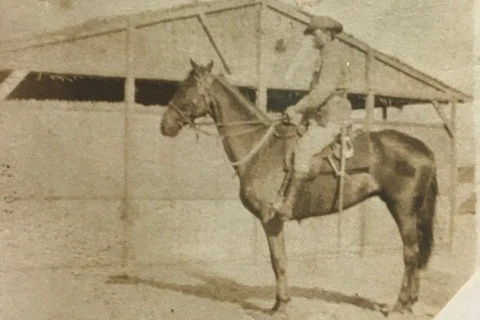
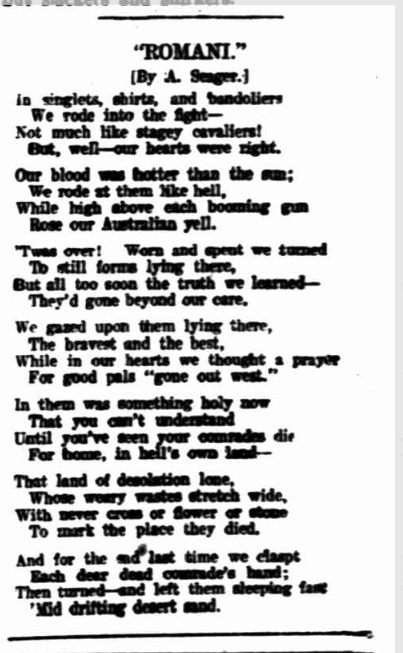
At the Battle of Romani in 1916, under fire, Bill was exemplary. While other officers changed mounts, some 17 times, Bill stayed throughout with Shanahan on him, doing over six hours of gruelling work and fighting in hot, sandy and very dangerous conditions. Planes also bombed our horses at Romani.
At one stage four Tasmanian troopers, their horses shot, were pinned down in no man’s land. Bill and Shanahan galloped to their rescue, all four men were carried out at a gallop through the sand, under fire – all lives saved.
A truly wonderful horse!
Image: The Register, (Adelaide) 3rd Oct 1916
Bill and the Major returned to the battle. After a while Shanahan was shot in the leg. He fought on for another hour but eventually passed out in the saddle from blood loss – Bill carefully carried him three miles to the vet depot.
Shanahan’s leg was amputated and he was sent to London, awarded the DSO, then home, never to see Bill again. But Bill had plenty of fans now, having that never-say-die attitude. He was returned to being a packhorse – including carrying machine guns at Beersheba.
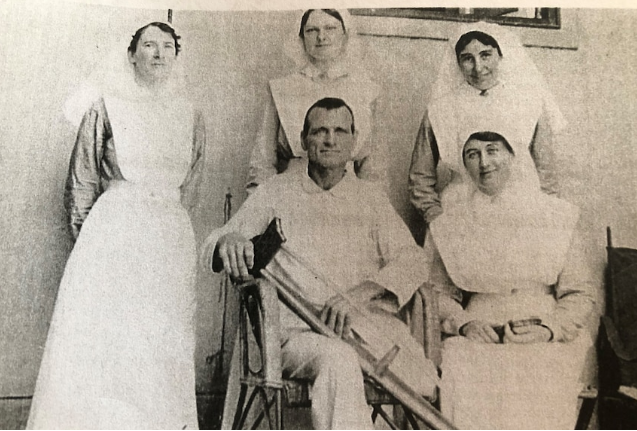
In 1918 Bill was bravely ridden at Jericho where Australians gathered for a race – the Jericho Cup. Run over three miles of sand. Fifteen starters. Turks in the distance across the Jordan, watched these horse mad Australians.
Bill was coming last but he plugged on steadily – and won the race – despite many bets on him throwing his rider! To everyone’s amazement he didn’t buck – his rider was Jackie Mullagh, an Aboriginal trooper and ace rider – and the only rider who didn’t whip his horse in the gruelling race. While the tired horses were walked out and taken for a drink, Bill would have none of that soft stuff – he charged up a sand dune with Jackie then walked briskly back down – then bucked him off! Jackie got a twisted ankle.
There’s a happy ending! At the end of war when troopers were tearfully shooting their beloved mounts as our government wouldn’t bring them home, some men arranged for Bill and a mare named Penny to be smuggled to Gallipoli, allegedly to gather artefacts. Jackie Mullagh was one of Bill’s ardent defenders, not wanting him shot. There, the horses were given to a Turkish farmer who had a good farm, on condition no-one was ever to ride Bill, to see out their days in peace.
Australia’s greatest warhorse recreated by passionate Sculptor Carl Valerius
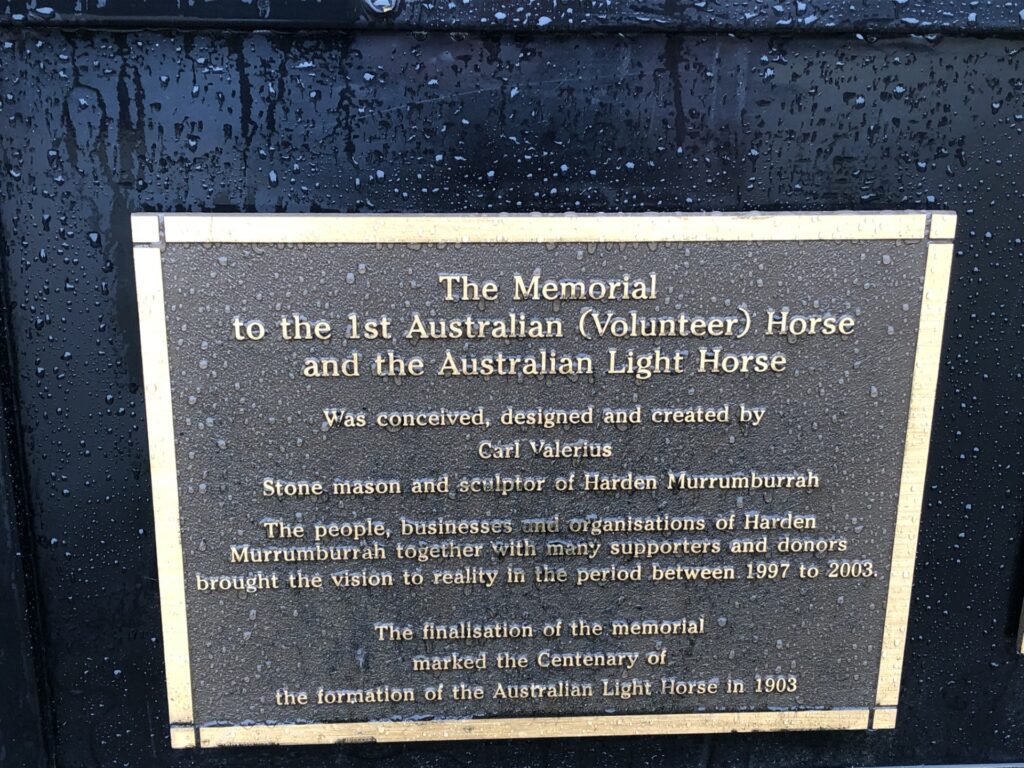
I (Angela) first had the pleasure of meeting stone mason and sculptor Carl Valerius in 2018 at the inaugural running of The Jericho Cup in Warrnambool. In 2019 (& in 2022) I was back again, with a display about all things Waler, and was delighted to hear from Carl upon seeing all my photographs of my Waler horses that he felt these horses were definitely the real thing.
Much has been written about Bill, and this beautiful life-size bronze sculpture by Carl truly does him justice. Located at Harden Murrumburrah, NSW Australia, the detail is simply incredible: it really has to be seen to be believed.
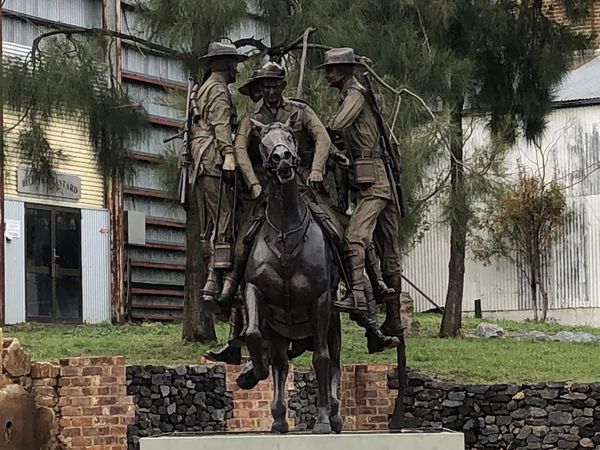

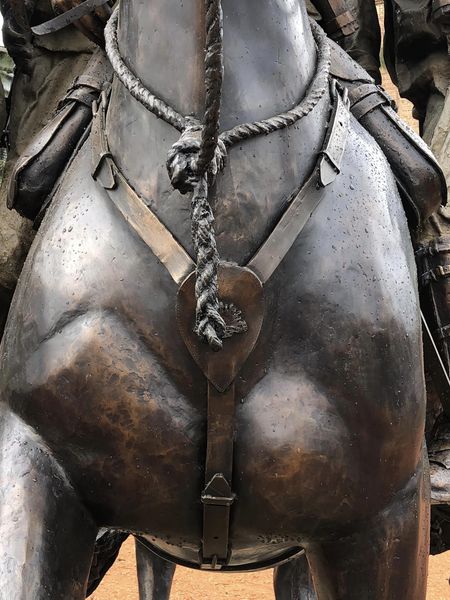
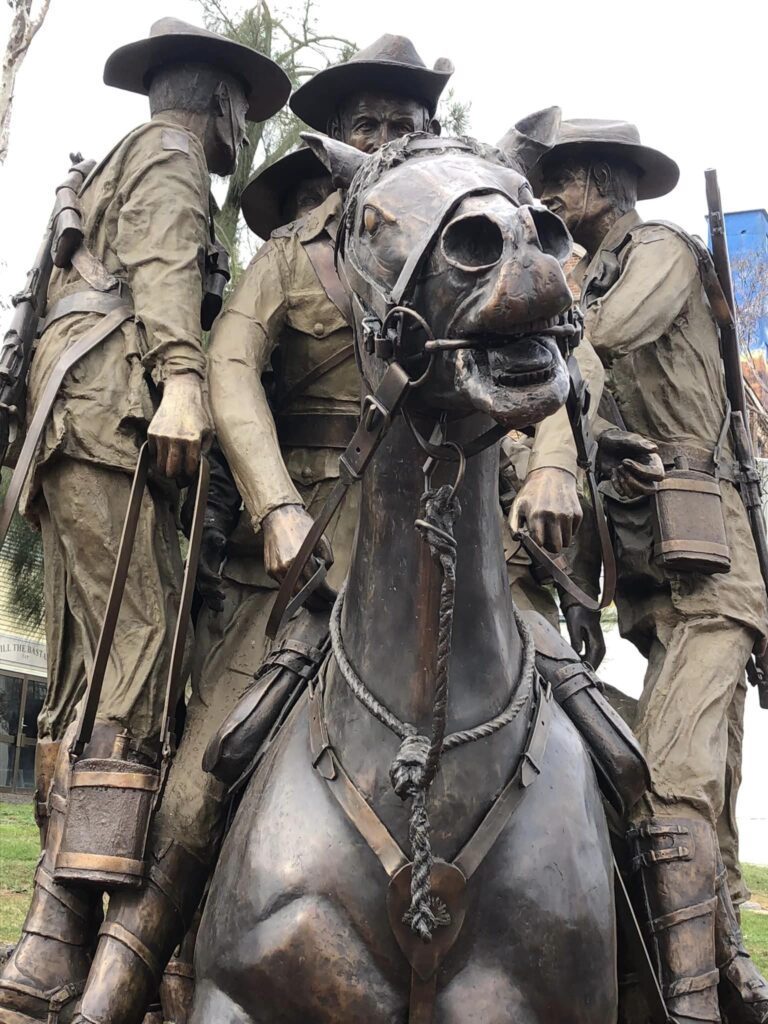
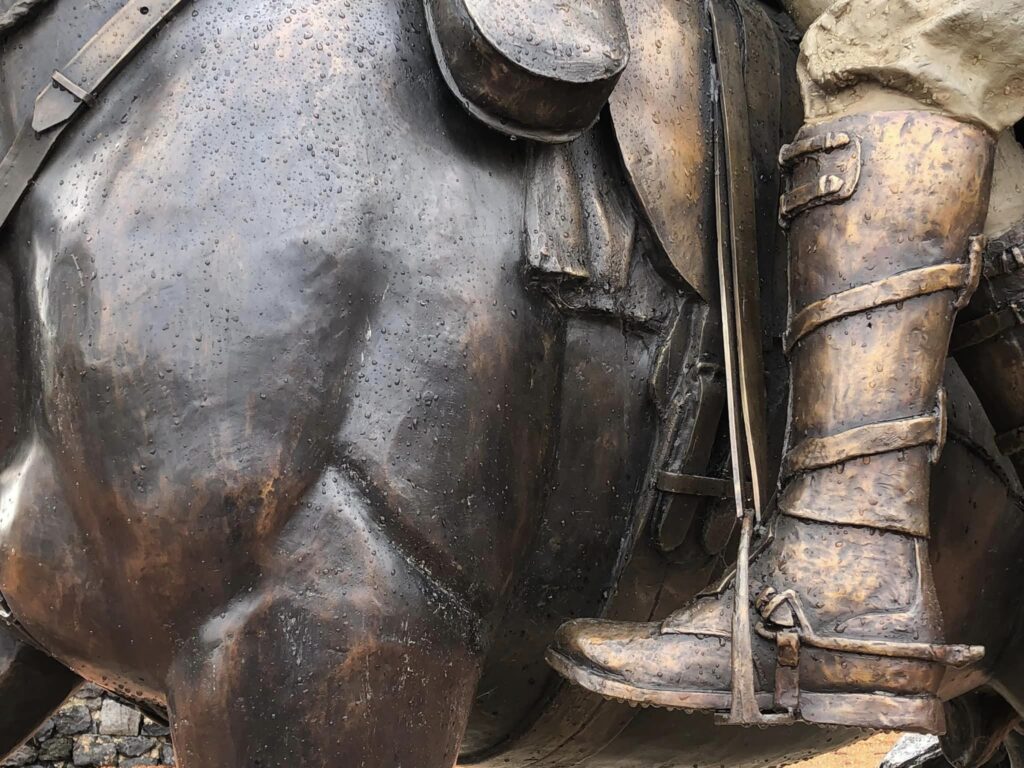
Read all about this project here.
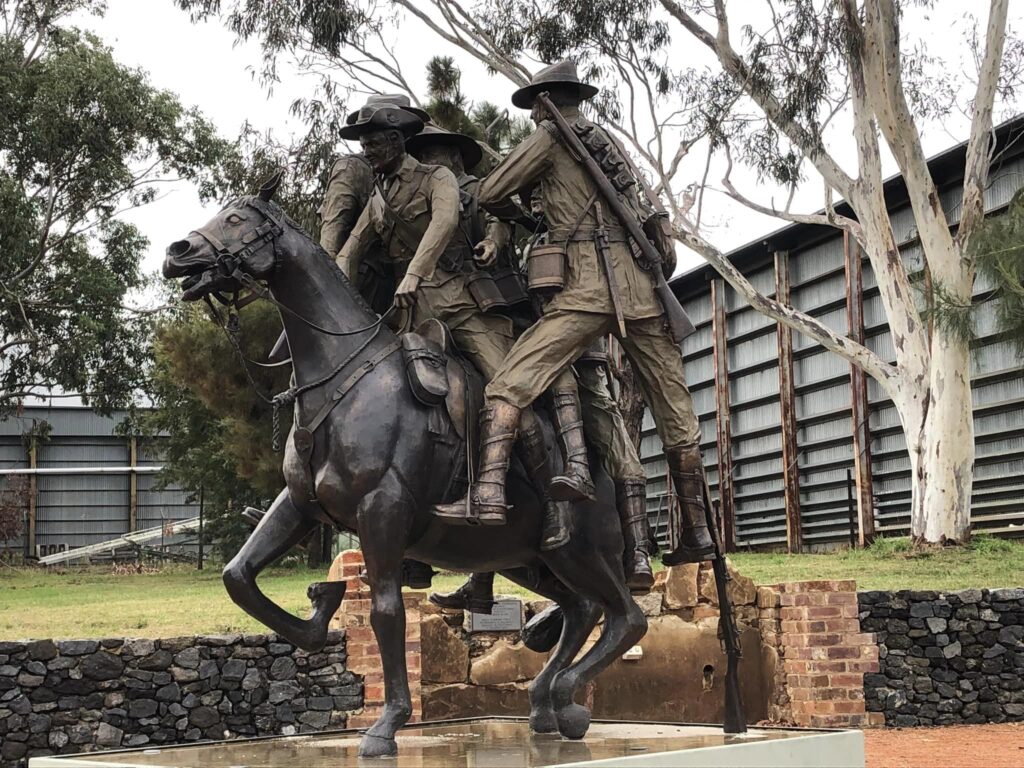
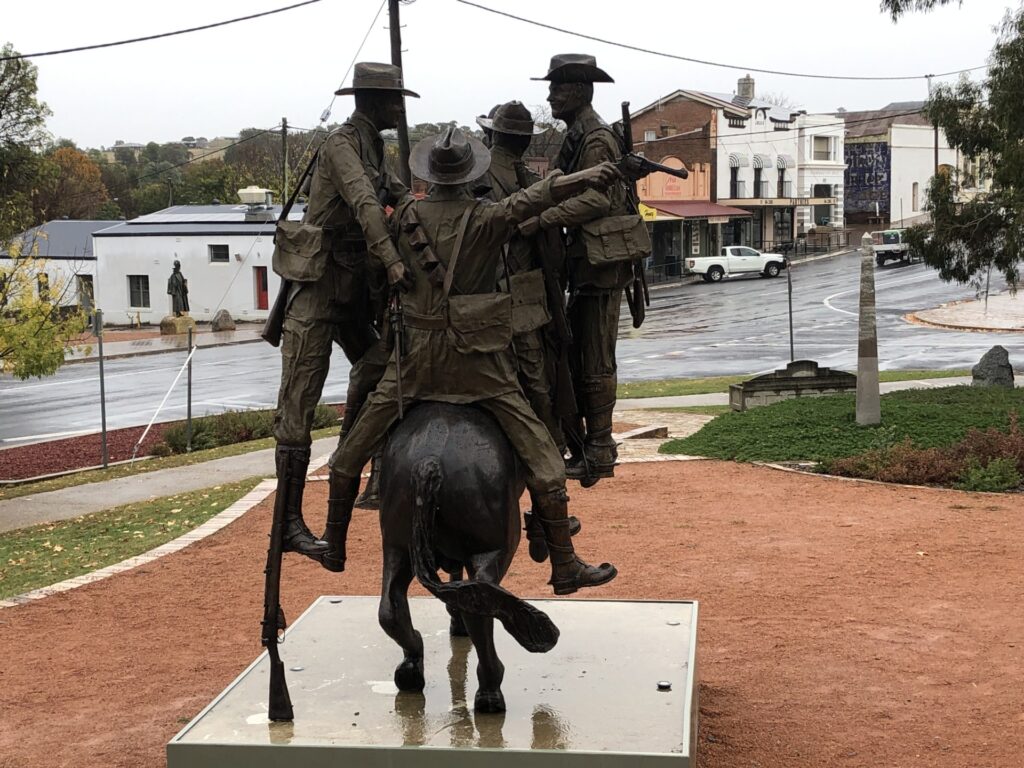
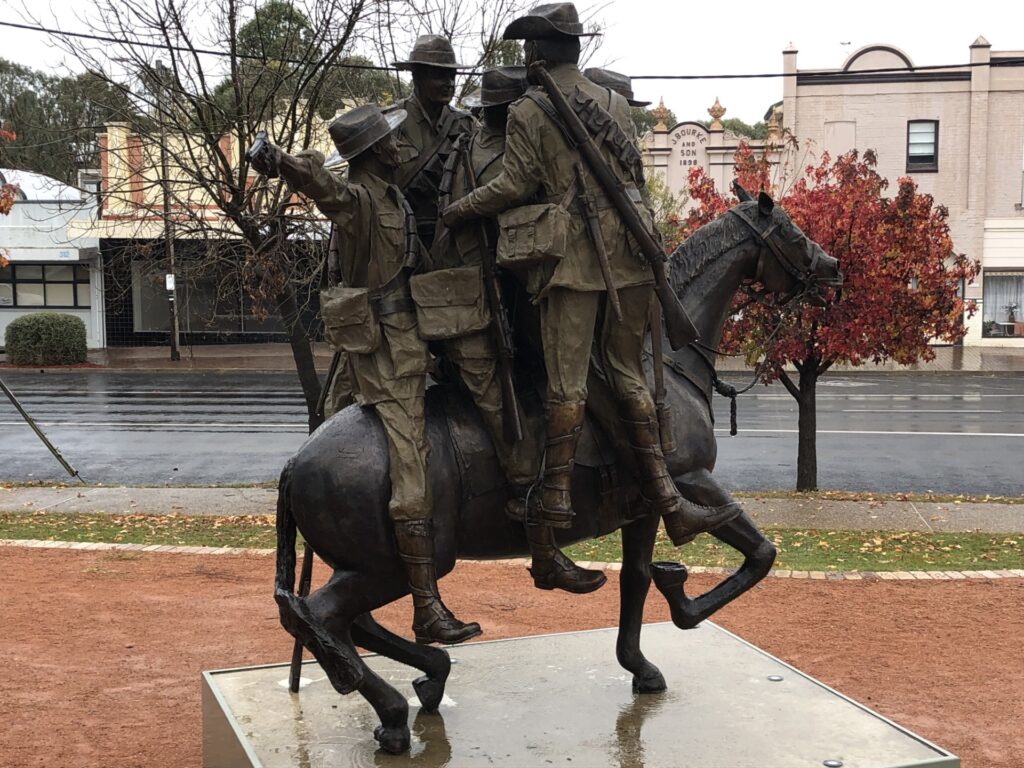
The video at the bottom of this post tells the story of Bill and Carl.
